Infraorder Pentatomomorpha Scientific name Coreidae | ||
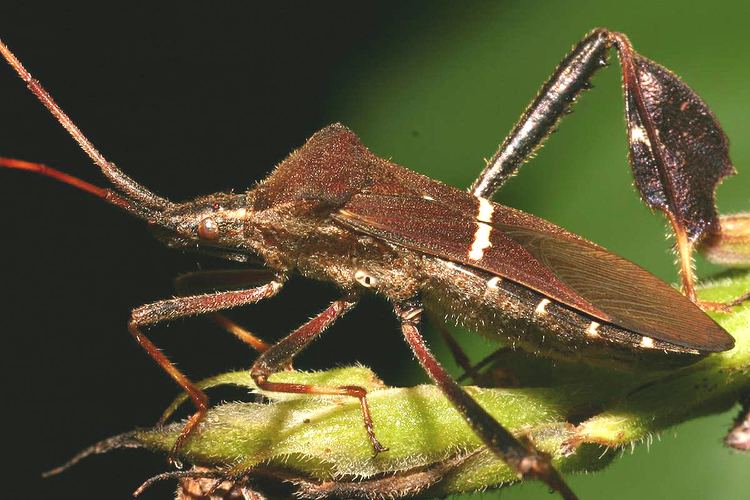 | ||
Lower classifications | ||
The leaf footed bug coreidae
The Coreidae are a large family of predominantly sap-sucking insects in the Hemipteran suborder Heteroptera. The name "Coreidae" derives from the Ancient Greek κόρις meaning bedbug.
Contents
- The leaf footed bug coreidae
- Common names and significance
- Morphology and appearance
- Biology and habits
- Taxonomy and systematics
- References
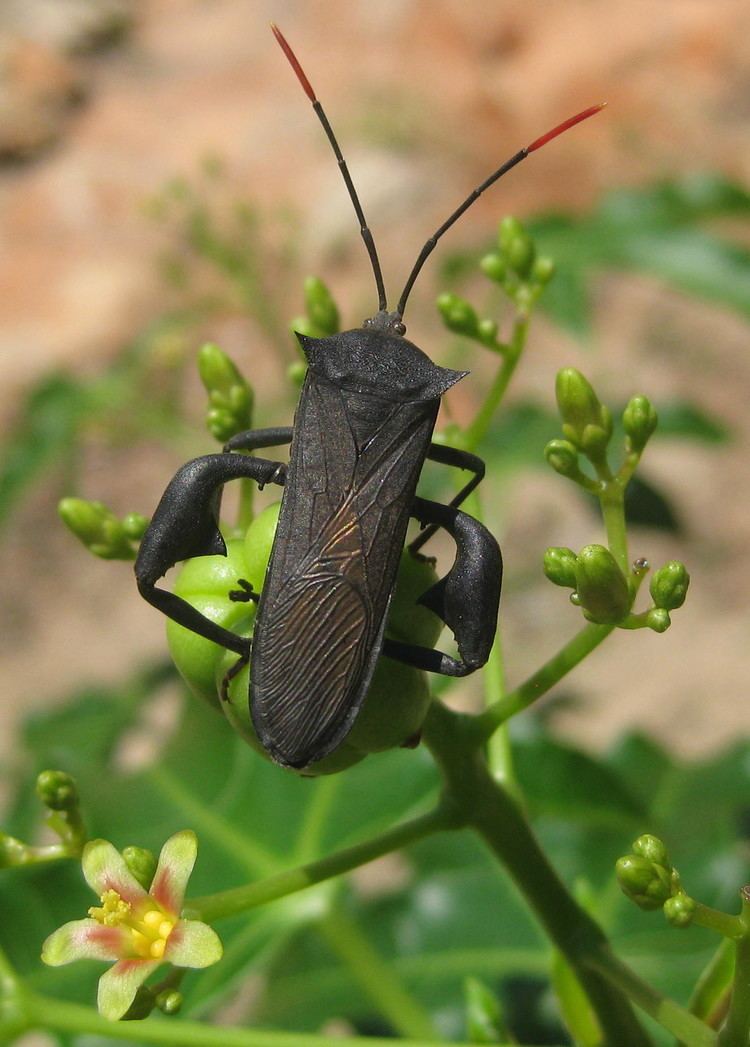
As a family, the Coreidae are cosmopolitan, but most of the species are tropical or subtropical.
Common names and significance
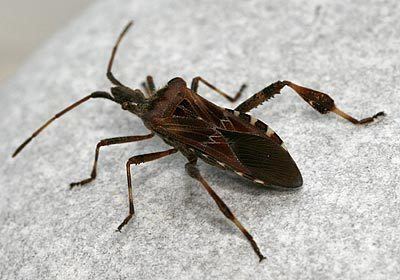
The common names of Coreidae vary regionally. Leaf-footed bug refers to leaf-like expansions on the legs of some species, generally on the hind tibiae. In North America, the pest status of species such as Anasa tristis on squash plants and other cucurbits gave rise to the name squash bugs. Coreidae are called twig-wilters or tip-wilters in parts of Africa and Australia because many species feed in young twigs, injecting juices that macerate the tissues of the growing tips and cause them to wilt abruptly.
Morphology and appearance
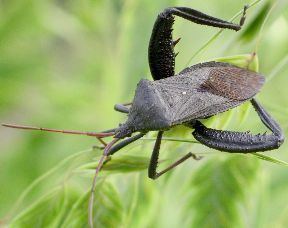
The Coreidae commonly are oval-shaped, with antennae composed of four segments, numerous veins in the membrane of the fore-wings, and externally visible repugnatorial stink glands. They vary in size from 7 to 45 mm long, which implies that the family includes some of the biggest species of Heteroptera. The body shape is quite variable; some species are broadly oval, others are elongated with parallel sides, and a minority are slender. Many species with the "leaf-footed" tibiae are very slender with conspicuous expansions of the hind tibiae, but some robust species also have decided expansions. Some species are covered with spines and tubercles. As an example of these, the tribe Phyllomorphini Mulsant & Rey, 1870, are strikingly aberrant, with thin legs, spiny bristles, and laciniate outlines and adornments.

Many of the more robust species have grossly enlarged, thickened and bowed hind femora armed with spikes on the inner edge, and with hind tibiae to match, though the enlargement of the tibiae is less exaggerated.
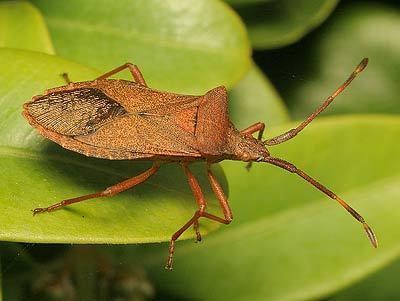
In the nymphs, the openings of the two repugnatorial stink glands of Coreidae are visible as two projections or spots on the median line of the dorsal surface of the abdomen, one at the anterior and one at the posterior edge of the 5th abdominal tergite above the glands inside. During the final ecdysis the anatomy is rearranged and the glands end up in the metathorax, opening laterally through ostioles between the mesothoracic and metathoracic pleura.
Biology and habits
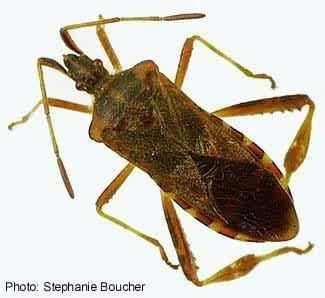
The Coreidae generally feed on the sap of plants. There have been claims that some species are actively carnivorous, but there is a lack of material evidence and in the field some are easy to confuse with some species of Reduviidae, so doubt has been cast on the reality or significance of the claims.
Some Coreidae, such as Phyllomorpha laciniata, exhibit parental care by carrying their eggs. This behaviour significantly improves the eggs' chances of avoiding the attacks of parasitoids.
Taxonomy and systematics
The family Coreidae are in the order Hemiptera and closely related to the families Alydidae, Hyocephalidae, Rhopalidae, and Stenocephalidae. Together, these five families form the superfamily Coreoidea. The family is large, with more than 1,900 species in over 270 genera.
Most taxonomists dealing with Coreidae divide the family into three or sometimes four subfamilies. Numerous tribes of the Coreinae have previously been proposed for elevation to subfamily rank, for example, the Agriopocorini, Colpurini, Hydarini, Phyllomorphini, and Procamptini, but the only one of these changes that at least a significant minority of researchers currently accept is the elevation of the Agriopocorinae, and recent reviews tend to treat them as a tribe again, recognizing only the three subfamilies known by 1867. Another difficulty is that the genus Eubule has not yet been placed.
Accordingly, the subfamilies are as follows, together with illustrative genera of each:
